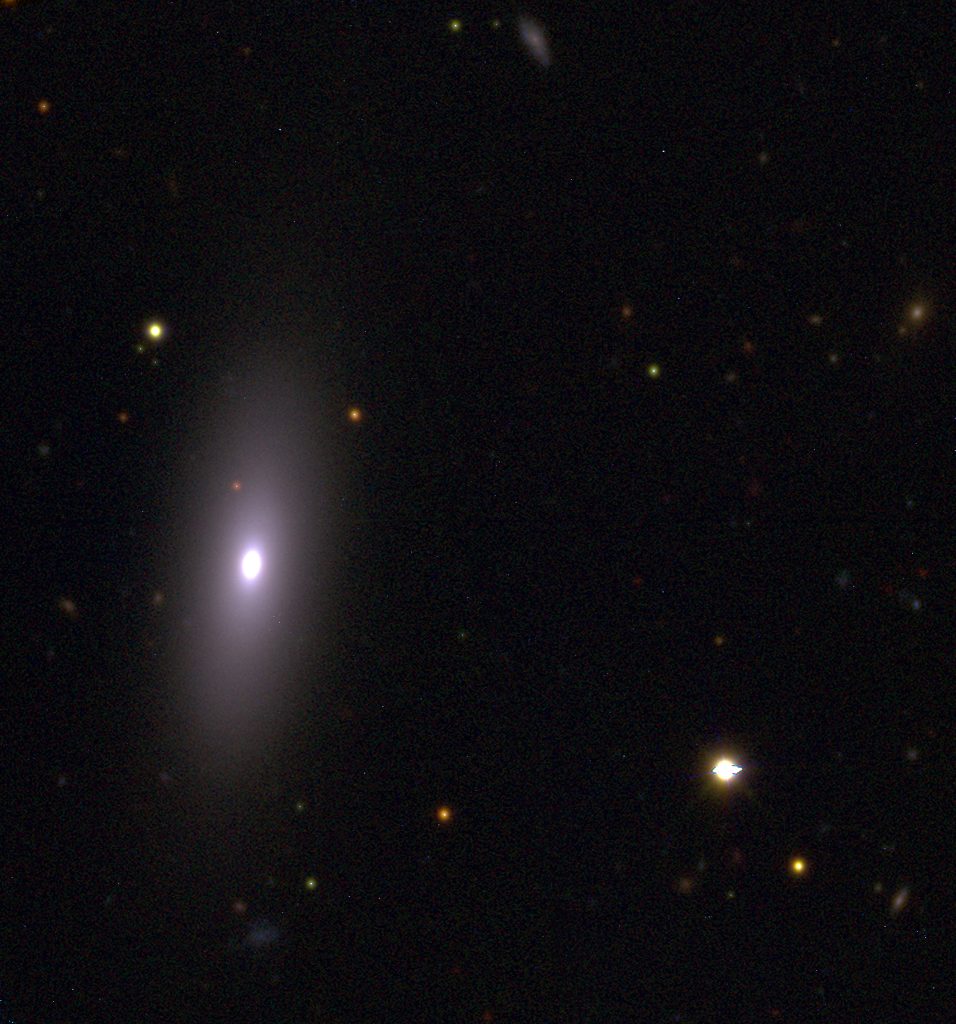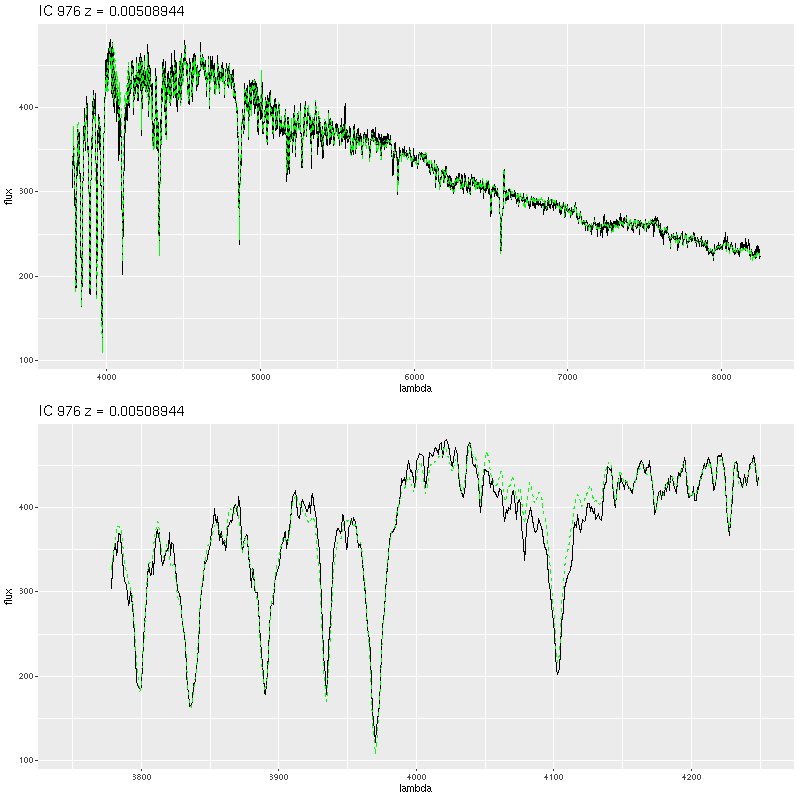I’m going to try to keep this one short. IC 976 is another post-starburst galaxy that was selected and recently observed by HST for the Zoogems project (proposal ID 15445, PI Keel). I took a shot at creating a color image by combining the ACS observation taken with the F475W filter (approximately equivalent to SDSS g band) with r and z band images from the Legacy Survey. Well that wasn’t too rewarding since this galaxy appears quite featureless.

Like the galaxy in the previous post the SDSS spectro pipeline misclassified this galaxy’s spectrum as a star with a recession velocity of ≈ 1200 km/sec. Unlike the galaxy in the previous post IC 976 is well known to have a post-starburst nuclear spectrum, and its correct heliocentric redshift of 0.00509 is listed in NED and confirmed with my own redshift estimation code. If that’s its Hubble flow redshift (doubtful) its distance would be about 21.8 Mpc (distance modulus m-M=31.7) and the 3″ SDSS fiber would cover 315 pc.

Once again I ran my SFH modeling code on the SDSS spectrum, using only my metal rich PYPOPSTAR+EMILES ssp library, with results below:

Despite the superficially similar spectra1this has a nearly identical HδA index of 8.1 ± 0.3 Å. this model favors an older (peak at 800 Myr lookback time), stronger, and shorter burst than the previous example. The model’s burst strength of ≈ 40 % of the present day stellar mass seems high, but the estimated total stellar mass within the fiber footprint is only ≈108.5 M☉, which is likely a small fraction of the galaxy’s total stellar mass. For a rough estimate of the total mass the SDSS g band Petrosian magnitude is listed as 13.6, making the absolute magnitude -18.1. With a solar g band absolute magnitude of 5.11 the galaxy’s luminosity is ≈ 109.3 L☉, and assuming a stellar mass to luminosity ratio around 1 the mass would therefore be ≈ 2×109 M☉. If the merger added a little over 108 M☉ to the system as implied by this model the mass ratio of the progenitors would be on the order of 20:1.
IC 976 was one of 7 post-starburst galaxies in an IFU based spectroscopic study by Pracy et al. (2012). This galaxy2designated “E+A 6” in the paper. had a very strong negative radial gradient in the Balmer absorption index, as did 5 of the 6 others in the study. They concluded that centrally concentrated starbursts fueled by minor mergers was the most likely cause of their present evolutionary state. The lack of any apparent tidal features in the available imaging of this galaxy likely reflects the age of the merger and mass ratio of the progenitors.
